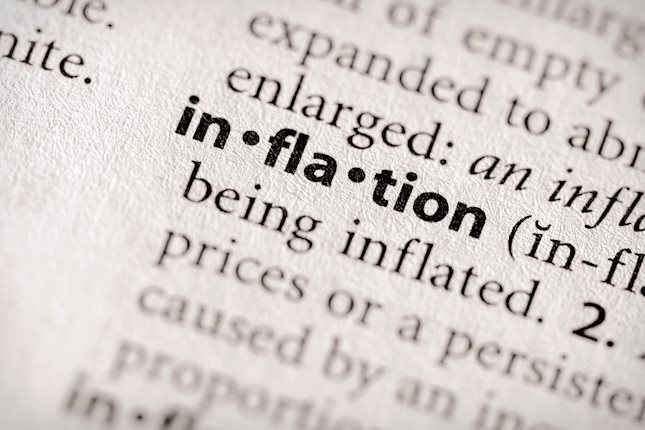Here is what you need to know on Wednesday, November 27:
The US Dollar (USD) stabilizes following two days of choppy action, with the USD Index moving sideways slightly below 107.00 in the European morning on Wednesday. Ahead of the Thanksgiving Day holiday, the US economic calendar will feature several high-tier data releases, including Personal Consumption Expenditures (PCE) Price Index and Durable Goods Orders for October.
US Dollar PRICE This week
The table below shows the percentage change of US Dollar (USD) against listed major currencies this week. US Dollar was the weakest against the Japanese Yen.
| USD | EUR | GBP | JPY | CAD | AUD | NZD | CHF | |
|---|---|---|---|---|---|---|---|---|
| USD | -0.61% | -0.36% | -1.31% | 0.80% | 0.36% | -0.26% | -0.73% | |
| EUR | 0.61% | 0.08% | -1.32% | 0.81% | 0.90% | -0.24% | -0.71% | |
| GBP | 0.36% | -0.08% | -1.40% | 0.74% | 0.82% | -0.31% | -0.78% | |
| JPY | 1.31% | 1.32% | 1.40% | 2.15% | 2.14% | 1.13% | 0.77% | |
| CAD | -0.80% | -0.81% | -0.74% | -2.15% | -0.29% | -1.04% | -1.55% | |
| AUD | -0.36% | -0.90% | -0.82% | -2.14% | 0.29% | -1.12% | -1.59% | |
| NZD | 0.26% | 0.24% | 0.31% | -1.13% | 1.04% | 1.12% | -0.48% | |
| CHF | 0.73% | 0.71% | 0.78% | -0.77% | 1.55% | 1.59% | 0.48% |
The heat map shows percentage changes of major currencies against each other. The base currency is picked from the left column, while the quote currency is picked from the top row. For example, if you pick the US Dollar from the left column and move along the horizontal line to the Japanese Yen, the percentage change displayed in the box will represent USD (base)/JPY (quote).
The modest improvement seen in risk mood made it difficult for the USD to gather strength during the American trading hours on Tuesday. Early Wednesday, US stock index futures trade mixed, while the benchmark 10-year US Treasury bond yield struggles to build on Tuesday's modest gains and remains below 4.3%. In addition to above-mentioned data releases, the US Department of Labor will publish the weekly Initial Jobless Claims and the US Bureau of Economic Analysis will announce its second estimate of the annualized Gross Domestic Product (GDP) growth for the third quarter.
During the Asian trading hours, the Reserve Bank of New Zealand (RBNZ) announced that it lowered the policy rate by 50 basis points (bps) to 4.25% from 4.75%. This decision came in line with the market expectation. "If economic conditions continue to evolve as projected, the committee expects to be able to lower the OCR further early next year," the RBNZ noted in its policy statement. Speaking on the policy outlook, RBNZ Governor Adrian Orr noted that the door remains open for another 50 bps rate cut in February. After fluctuating wildly with the immediate reaction to the RBNZ announcements, NZD/USD gained traction and was last seen trading in positive territory above 0.5850.
EUR/USD failed to make a decisive move in either direction on Tuesday and closed the day virtually unchanged. The pair stays relatively calm in the European morning on Wednesday and fluctuates in a narrow band below 1.0500.
GBP/USD lost its traction after testing 1.2600 for the second consecutive day on Tuesday. The pair moves sideways above 1.2550 to begin the European session.
USD/JPY came under bearish pressure on Tuesday and dropped 0.7%. The pair continues to push lower and was last seen losing more than 0.5% on the day at around 152.00.
Gold staged a modest recovery after falling toward $2,600 on Tuesday and ended the day with small gains. XAU/USD extends its rebound early Wednesday and trades near $2,650.
Inflation FAQs
Inflation measures the rise in the price of a representative basket of goods and services. Headline inflation is usually expressed as a percentage change on a month-on-month (MoM) and year-on-year (YoY) basis. Core inflation excludes more volatile elements such as food and fuel which can fluctuate because of geopolitical and seasonal factors. Core inflation is the figure economists focus on and is the level targeted by central banks, which are mandated to keep inflation at a manageable level, usually around 2%.
The Consumer Price Index (CPI) measures the change in prices of a basket of goods and services over a period of time. It is usually expressed as a percentage change on a month-on-month (MoM) and year-on-year (YoY) basis. Core CPI is the figure targeted by central banks as it excludes volatile food and fuel inputs. When Core CPI rises above 2% it usually results in higher interest rates and vice versa when it falls below 2%. Since higher interest rates are positive for a currency, higher inflation usually results in a stronger currency. The opposite is true when inflation falls.
Although it may seem counter-intuitive, high inflation in a country pushes up the value of its currency and vice versa for lower inflation. This is because the central bank will normally raise interest rates to combat the higher inflation, which attract more global capital inflows from investors looking for a lucrative place to park their money.
Formerly, Gold was the asset investors turned to in times of high inflation because it preserved its value, and whilst investors will often still buy Gold for its safe-haven properties in times of extreme market turmoil, this is not the case most of the time. This is because when inflation is high, central banks will put up interest rates to combat it. Higher interest rates are negative for Gold because they increase the opportunity-cost of holding Gold vis-a-vis an interest-bearing asset or placing the money in a cash deposit account. On the flipside, lower inflation tends to be positive for Gold as it brings interest rates down, making the bright metal a more viable investment alternative.
Information on these pages contains forward-looking statements that involve risks and uncertainties. Markets and instruments profiled on this page are for informational purposes only and should not in any way come across as a recommendation to buy or sell in these assets. You should do your own thorough research before making any investment decisions. FXStreet does not in any way guarantee that this information is free from mistakes, errors, or material misstatements. It also does not guarantee that this information is of a timely nature. Investing in Open Markets involves a great deal of risk, including the loss of all or a portion of your investment, as well as emotional distress. All risks, losses and costs associated with investing, including total loss of principal, are your responsibility. The views and opinions expressed in this article are those of the authors and do not necessarily reflect the official policy or position of FXStreet nor its advertisers. The author will not be held responsible for information that is found at the end of links posted on this page.
If not otherwise explicitly mentioned in the body of the article, at the time of writing, the author has no position in any stock mentioned in this article and no business relationship with any company mentioned. The author has not received compensation for writing this article, other than from FXStreet.
FXStreet and the author do not provide personalized recommendations. The author makes no representations as to the accuracy, completeness, or suitability of this information. FXStreet and the author will not be liable for any errors, omissions or any losses, injuries or damages arising from this information and its display or use. Errors and omissions excepted.
The author and FXStreet are not registered investment advisors and nothing in this article is intended to be investment advice.
Recommended content
Editors’ Picks

EUR/USD regains 1.0500 and beyond as US Dollar wilts ahead of data
EUR/USD is extending the rebound above 1.0500 in the European session on Wednesday. Traders cash in on the US Dollar long positions ahead of a series if top-tier US data, lifting the pair. The USD/JPY sell-off also adds to the US Dollar downside.

GBP/USD holds gains near 1.2600, US PCE data eyed
GBP/USD extends the bullish momentum to trade near 1.2600 in European trading on Wednesday. The pair remains underpinned by a sustained US Dollar weakness and risk-off sentiment as traders turn cautious ahead of top-tier US data releases.

Gold price climbs above $2,650 on trade war concerns, sliding US bond yields and softer USD
Gold price sticks to modest intraday gains near a two-day high, above the $2,650 level, through the first half of the European session as geopolitical risks and US President-elect Donald Trump's tariff plans drive haven flows for the second straight day.

US core PCE inflation set to hold steady, raising doubts on further Federal Reserve rate cut
The United States Bureau of Economic Analysis (BEA) is set to release the Personal Consumption Expenditures (PCE) Price Index data for October on Wednesday at 13:30 GMT.

Eurozone PMI sounds the alarm about growth once more
The composite PMI dropped from 50 to 48.1, once more stressing growth concerns for the eurozone. Hard data has actually come in better than expected recently – so ahead of the December meeting, the ECB has to figure out whether this is the PMI crying wolf or whether it should take this signal seriously. We think it’s the latter.

Best Forex Brokers with Low Spreads
VERIFIED Low spreads are crucial for reducing trading costs. Explore top Forex brokers offering competitive spreads and high leverage. Compare options for EUR/USD, GBP/USD, USD/JPY, and Gold.